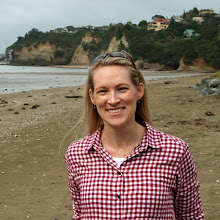Last weekend I made good on my resolution to do more cultural stuff. My goal is to continue doing this, and sharing it with you, sort of like my own little travel guide "book". It's also a bit of a challenge for me - how many touristy sites can I visit and blog about before April? Ready, set, go!
I was woken up on Saturday morning by the sound of rain, so instead of getting up early and heading to Kyoto, I rolled over and went back to sleep. An hour or so later I woke up again to find that the rain had stopped. It was still cloudy and overcast, but dry enough for me to get up, shower, and head out the door - camera in hand. The destination I had in mind was Ginkakuji, the Silver Pavilion in Kyoto.
First, a quick history lesson. "Ginkakuji Temple", according the the brochure they handed me when I purchased my ticket, "a Zen temple, was established in 1482 by Ashikaga Yoshimasa, the eighth Muromachi Shogunate." He built it as his retirement home. His grandfather (same name), actually built Kinkakuji, the Golden Pavilion (that's on the other side of the city, so it'll have to be another day's destination). B's the real Japanese history buff, so I'm just sticking to what the brochure tells me.
The street that leads to the temple's entrance is lined with shops selling touristy stuff, green tea ice cream and drinks, and senbei (rice crackers). Seeing as I hadn't had breakfast (or lunch) I treated myself to a senbei!
You can even buy an ice pop from the exact same shop where Leonardo Dicaprio bought ice cream!!!
At the top of this street, you arrive at a hedge-lined path that leads to the actual temple, or rather the ticket booth. Entrance is ¥500 for adults (forgive me, I didn't think to look at the child price). Save your ticket - it's actually a good luck blessing for your house! Mine...well, it got crumpled in my bag. Oops.
Once you are inside the temple complex, everything is very tranquil and serene...very Zen, as it should be! The paths are well laid out, with fool proof arrows marking the way. For the next thirty minutes or so (depending on how slowly you stroll though or how many pictures you take) relax and take in the perfectly manicured surroundings.
The rippled sand and the flat topped cone are called Ginsyadan and Kogetsudai repectively. The Ginsyandan is meant to represent waves, and Kogetsudai Mt. Fuji.
This is it, Ginkaku, or as it was originally called, Kannon-den. Despite being a national treasure, I find it really underwhelming (the same way I found the Mona Lisa and Leaning Tower of Pisa underwhelming). I was glad to find that it was no longer under renovations though, as the last two times I visited, it was hidden behind scaffolding!
Be careful if you visit on a rainy day...these suckers can get slippery!
A couple more months and all of this will be bright red...I can't wait!
I got lucky and visited on a day when the temple was fairly quiet, so it was extra nice as an escape from the craziness of the city. A lot of places in Japan can be quite crowded though, as tourists jockey to get that perfect picture. It's more like being swept through a river of people than having a true Zen experience! While many tourist sites in Kyoto are huge, and can take hours to really see, Ginkakuji is small and compact, the perfect option if you are looking for something cultural, but don't have a lot of time to spend. Over all it's pretty, peaceful, and definitely worth a visit when you're in Kyoto.
Subscribe to:
Post Comments (Atom)
























No comments